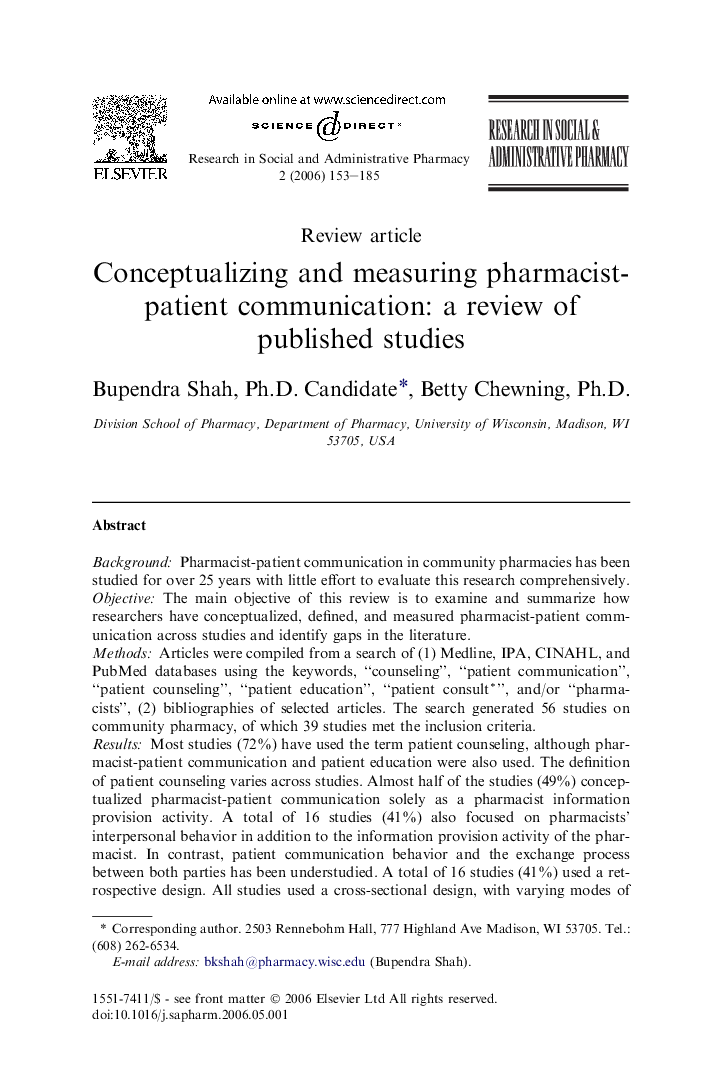| Article ID | Journal | Published Year | Pages | File Type |
|---|---|---|---|---|
| 2508905 | Research in Social and Administrative Pharmacy | 2006 | 33 Pages |
BackgroundPharmacist-patient communication in community pharmacies has been studied for over 25 years with little effort to evaluate this research comprehensively.ObjectiveThe main objective of this review is to examine and summarize how researchers have conceptualized, defined, and measured pharmacist-patient communication across studies and identify gaps in the literature.MethodsArticles were compiled from a search of (1) Medline, IPA, CINAHL, and PubMed databases using the keywords, “counseling”, “patient communication”, “patient counseling”, “patient education”, “patient consult∗”, and/or “pharmacists”, (2) bibliographies of selected articles. The search generated 56 studies on community pharmacy, of which 39 studies met the inclusion criteria.ResultsMost studies (72%) have used the term patient counseling, although pharmacist-patient communication and patient education were also used. The definition of patient counseling varies across studies. Almost half of the studies (49%) conceptualized pharmacist-patient communication solely as a pharmacist information provision activity. A total of 16 studies (41%) also focused on pharmacists' interpersonal behavior in addition to the information provision activity of the pharmacist. In contrast, patient communication behavior and the exchange process between both parties has been understudied. A total of 16 studies (41%) used a retrospective design. All studies used a cross-sectional design, with varying modes of data collection such as mail surveys, telephone interviews, nonparticipant observation, and shopper studies. Taped encounters are rare.Summary/ImplicationsThis review revealed that most studies have focused on a one way communication of pharmacists to patients. A need for examining the patient-pharmacist dyad is apparent. Future research could explore a greater use of taped encounters to analyze the interactive communication process, affective components of communication such as collaborative problem solving, interpersonal relationship development, and the expertise that patients bring into the encounter.
